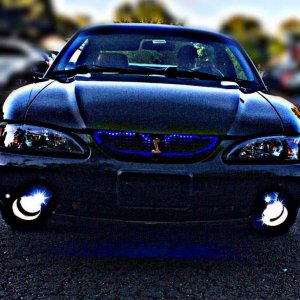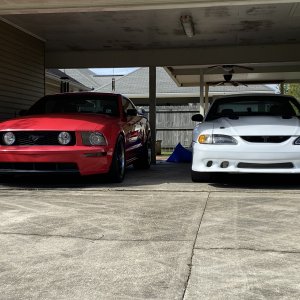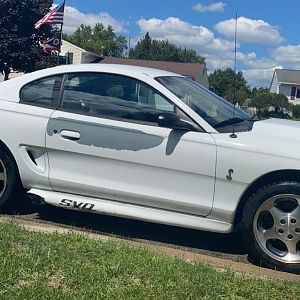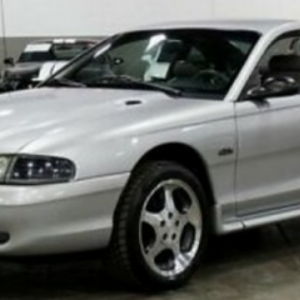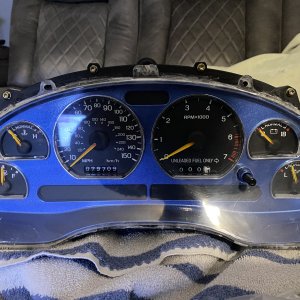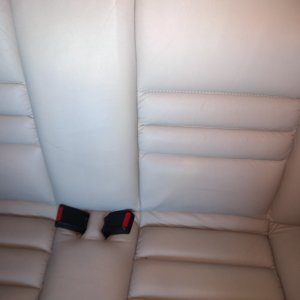Step Three: Starting Line
1. Burnout
If you are running standard radial street tires a burnout is not necessary, and can actually hurt performance. (The reason being that when street tires are heated excessively, such as during a burnout, they tend to marble up and build little balls of rubber on the tread) However, a light spin of your tires, maybe one or two rotations will get off all of the debris you may have picked up in the staging lanes.
If not doing a burnout go around the water box. If you do then you may need to spin the tires for a longer time to get all water out of your tread.
Of course, if you are running drag slicks or bias-ply tires, none of those rules apply. Bias ply tires and drag slicks respond very well to heat, and do not ball up like radials. If you are running slicks or bias plies, spin them only as much as required to build up the minimum amount of heat required for a perfect launch.
2) Staging.
This can be as simple as lighting up the 2 top yellow bulbs, or you can go into staging duals, shallow, or deep staging.
The top set of bulbs, under the "Pre Stage" designation light up as you pull your car within 6-8 inches of the stage light. This is the easiest step, and now it can go one of three ways to stage.
a) You can stage in a manner to get the lowest possible elapsed time (ET), and bump the car forward about an inch at a time until the second set of lights ("Stage") barely come on. This gives you the longest possible head start before the starting line, thereby giving you a lower ET. Doing a very shallow stage will slow down your reaction time (RT), but remember, RTs are independent of ET, so whether or not your reaction time is .500 seconds (perfect) or 1.5 seconds, your ET will be the same
b) You can roll further into the Stage beam so that it is fully on and you are about 3-4 inches closer to the starting line, which will speed up (lower) your RT, but will raise your ET, due to the smaller head start distance.
c) There is another choice, called Deep Staging. If you are going to deep stage your car, be sure to mark that clearly by your driver number on your car, by simply writing the word "DEEP." Deep staging is a popular idea for improving RTs significantly, because it puts you as close as possible to the starting line, but it also slows down your ET because of that reduced distance. A deep stage is one in which you roll your car first into the prestage lights, then you proceed forward to the stage lights. After you have both sets of top bulbs lit, you slowly and carefully roll your car forward until the Pre Stage bulbs turn off. This means your wheels have rolled so far forward that they are no longer in the beam of the pre stage lights. This puts you about 2-4 inches away from the actual starting line beam. If you are not careful during Deep staging, you can roll right through the starting line beam, thereby tripping the Red Light, and disqualifying you from the race before it starts. Some tracks will allow you to back up from a mistake like this during time trials, but very few will allow this during eliminations.
Now you are staged, and the lights are going to start dropping to start the race. The three amber lights will begin to countdown about 1 or 2 seconds after you are done staging, so be ready as soon as you are staged. Each amber bulb on the standard timing tree will stay lit for .500 seconds, so your total amount of time on the line will be about 2.5-3.5 seconds, depending on the starter.
Note – it is common courtesy to not begin your staging until the car in the other lane is done with his burnout.
3) Get your car up to launch RPM.
This will take nothing more than practice to decide which RPM is the optimal launch point for your car. Too low of an RPM and you will bog off the line, too high and you will get wheelspin.
Again it’s all a matter of trial and error. Automatics will generally stall as high as possible with one foot on brake, one on gas. They launch by releasing brake while flooring gas. Manuals take some practice and may involve slipping the clutch to avoid wheelspin.
4) Getting your Reaction Time right.
Rollout is the time it takes your car to move after you release the brakes. This means that to get a perfect, .500 second reaction time, you do NOT want to let go of the brake as soon as the green light comes on. If you were to let it go as soon as the Green came on, your reaction time would be .900, since it would be .400 rollout + .500 Green Light. Once the green light is on, your time is considered .500, you then add however long it takes for your car to break the starting line beam after the green light comes on.
To get a perfect launch you need to allow the 3rd (bottom) Amber bulb to come on and stay on for one tenth (.1) seconds. Leaving while the amber bulb is on allows your car to start the .400 seconds it needs to move before the green light comes on, thereby giving a lower reaction time. The one tenth rule is for Christmas Trees with incandescent (standard) light bulbs. If the track you are racing at uses the newer LED bulbs, then you will need to slow yourself down, as the LEDs in those light up 3 hundreths (.03 seconds) sooner than standard bulbs, so you have to allow the light to be on for .13 seconds.
Red Lights.
What’s the difference in .03 seconds you ask? A Red light is the difference. If your car crosses the starting line before the green light comes on, a red light will be displayed in your lane.
The computer doesn’t care if you left one thousandth (.001 second) early or 1 second early, an early start is a red light and a disqualification. If you launch your car after the final amber has been on for .07 seconds instead of a full tenth, your reaction time will then be .470, or a .03 second redlight, which is the same as a .499 redlight.
That’s it
That’s all I can do, the rest is up to you to run the length of the track, slow down after the finish line, and turn off of the track at a safe speed. Most tracks have the booth to get your timeslips right at the beginning of the return road. DO NOT SPEED ON THE RETURN LANE. You will see the posted speed limit, obey it. I have seen people kicked out for speeding on the return road and feel it is a justified action for the track to take.
Don’t be afraid to ask questions on anything you are unsure of. The majority of people you meet at the track are more then willing to help out and give tips.
Note – another courtesy is that the driver on the side of the return lane is always allowed to exit first. Also remember when racing at night most tracks require that you display at least one light on the front and one on the rear of your vehicle to follow you down the track.




